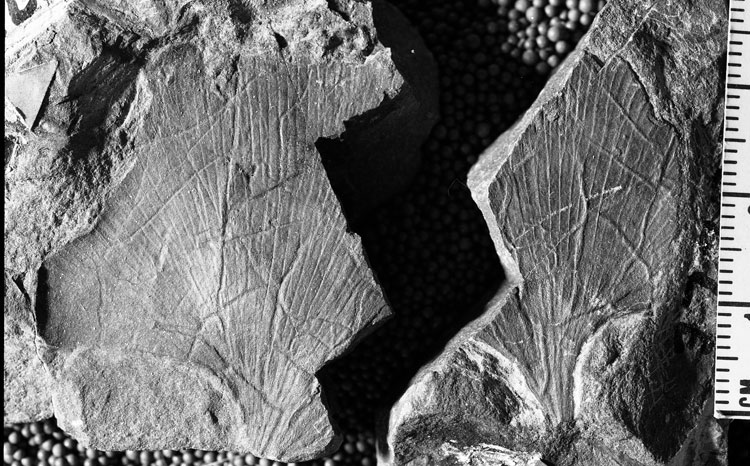Locality
From Hollick (1930) (p. 49)
"Yukon River, north bank, about 10 miles below Blatchford's mine (original No. 3AH23); collected by Arthur Hollick and Sidney Paige in 1903 (lot 3262)."
Description
From Hollick (1930) (p. 49)
"Ginkgo laramiensis Ward, Science, vol. 5, p. 496, fig. 7, 1885" (Ward 1885)
Remarks
From Hollick (1930) (p. 49)
"These leaves agree, essentially, with the leaf forms of the genus Ginkgo from the so-called "Laramie" formation of Wyoming, to which this specific name was given by Ward; but they agree about equally well with Ginkgo dawsoni Knowlton (1919) (p. 302, 1919 [= Ginkgo pusilla (Dawson) Knowlton, A catalogue of the Cretaceous and Tertiary plants of North America: U. S. Geol. Survey Bull. 152; p. 111, 1898, not G. pusilla Heer, 1876; = Salisburia pusilla Dawson, Roy. Soc. Canada Trans., vol. 11, sec. 4, p. 56, pl. 6, figs. 11-13, 1893 [1894]) from the Upper Cretaceous of Vancouver Island, and with certain of the forms referred to the Tertiary species Ginkgo adiantoides (Unger) Heer (1878) (p. 21, pl. 2, figs. 7, 8) from the island of Sakhalin, where the supposed Tertiary flora has been shown by Kryshtofovich (1918) (pp. 1 - 26) to be, at least in part, Cretaceous. Leaves referred to Ginkgo laramiensis Ward are also described and figured by Knowlton (1900) (p. 31, pl. 4, figs. 7 - 10; pl. 5, fig. 5) from the Montana group of Wyoming. In fact, it seems probable that all the specific forms mentioned may eventually be included in a single species."
